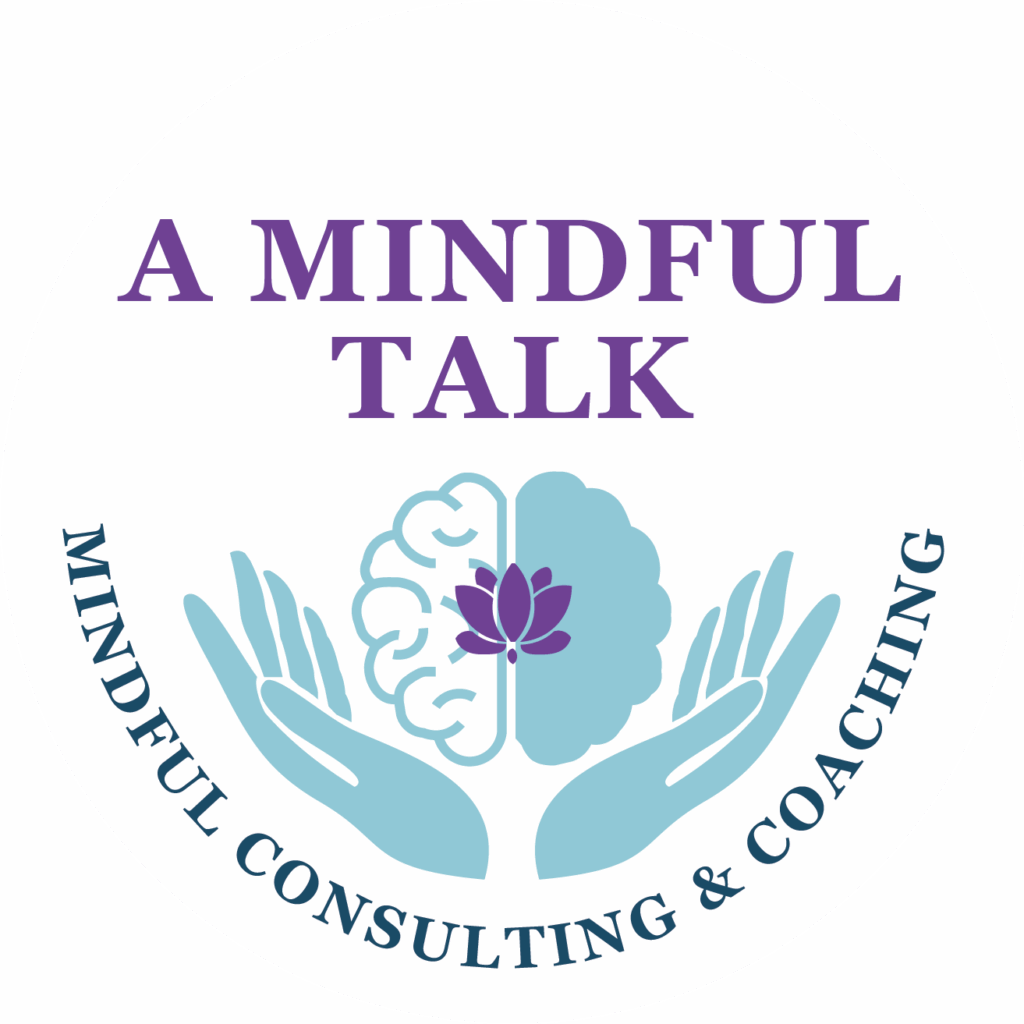Brain Mapping & Neurofeedback
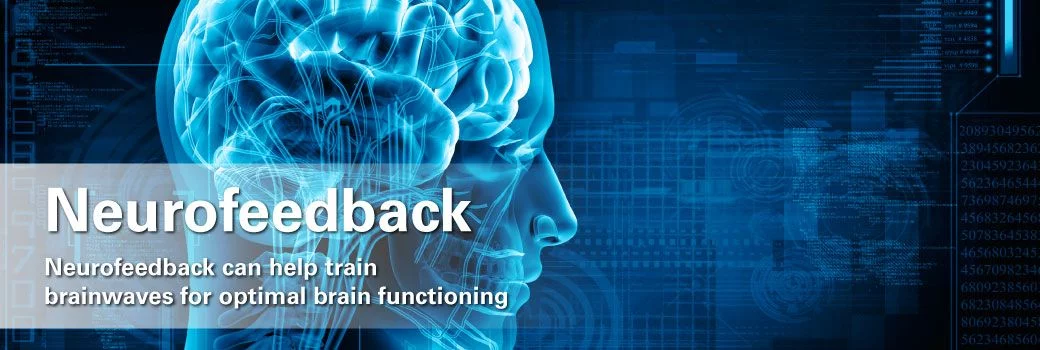
What is qEEG (Brain Mapping)?
The aEEG (Quantitative Electroencephalography) brain map is an assessment tool to measure the electrical activity (brainwaves) in the cerebral cortex, and the “coherence” between different areas. These are an indication of the healthy or normalcy of functional communications between regions of the brain. In other words, it measures how well the different areas of the brain are communicating with each other to perform complex tasks.
What is Neurofeedback and how does it work?
“Neurofeedback training is EEG (brainwave) biofeedback. During typical training, one or more electrodes are placed on the scalp and one or two are usually put on the earlobes. Then, high-tech electronic equipment provides real-time, instantaneous feedback (usually auditory and visual) about your brainwave activity. The electrodes allow us to measure the electrical patterns coming from the brain, much like a physician listens to your heart from the surface of your skin. No electrical current is put into your brain. Your brain’s electrical activity is relayed to the computer and recorded.” (Hammond, D. C. pp. 306)
By creating new electrical activity through the process of this feedback, the brain learns to self-regulate, which calms the nervous system. This reduces or eliminates symptoms. Almost any brain, regardless of its level of function, can be trained to function better.
How Neurofeedback Works on a Dysregulated Nervous System
The brain is a complex organ that is made up of billions of brain cells called neurons, which use electricity to communicate with each other. The communication signals produce a tremendous amount of electrical activity in the brain. Sensitive medical equipment, such as an EEG, can measure electricity levels over areas of the scalp. Everyone has the same brain waves, but people do not have the same pattern of brain waves.
Specific conditions are associated with certain patterns of electrical activity. For example, people with ADHD often have too many slow brain waves (theta) and not enough fast brain waves (beta). This is what causes them to have a hard time staying focused on certain tasks and activities.
Without self-regulation, many problems of the central nervous system can arise. Focus and attention issues, anxiety, and depression are just a couple of these issues that can manifest. Neurofeedback has shown to have impact when treating issues like ADHD, ADD, autism, anxiety, stress, sleep disorders, emotional distress, behavioral issues, mood disorders, chronic pain, headaches, learning disabilities, executive functioning issues, concussion, TBI and a variety of other issues. Almost any brain, regardless of its level of function, can be trained to function better.
EEG Neurofeedback optimizes the brain functioning of anyone, leading to higher performance. That is why many people that require high levels of performance such as athletes and executives use it for peak performance optimization.
How Dysregulation Impacts our brain and body?
When we are dysregulated, our thinking, behavior, heart rate and breathing can become erratic. We may feel panic or depression out of nowhere, or our emotions can feel overwhelming, flooding us with adrenaline and cortisol (the fight/flight response). We can also feel physically numb, clumsy, forgetful or scattered. It can be hard in these states to read reality correctly, seeing danger where we are actually safe, or safety where there is danger.
Key signs your brain is dysregulated:
- You feel spaced out, at a loss for words, can’t remember where you are.
- You feel scattered, trying to do a lot of things at once and finishing nothing.
- You are tripping over, dropping, or losing things.
- Your voice and facial expression are flat.
- You are in a rage.
- You can’t feel parts of your body — hands, mouth, face, nose, feet.
Other signs of dysregulation can be:
- Anxiety and panic attacks
- Easily startled and hypervigilant
- Nightmares/Flashbacks
- Insomnia
- Emotionally numb/detached
- Avoidance of anything related to a traumatic event
- Anger/irritability
The Neurofeedback Process:
The first step is getting a quantitative EEG (QEEG) or brain map. A cap is placed on one’s head to measure the surface electrical activity that the brain. Your data is compared against a database to look for patterns that highlight brain activity that is over or under aroused. It is a visual way to see brain waves and how they are functioning. After the brain map, a neurofeedback protocol is personally designed by providers, based on the data collected from the map, other cognitive and psychological assessments, and your goals for areas of improvement/enhancement, to optimize results.
Depending on the condition, issues, and brain functioning, the number of EEG Neurofeedback sessions required vary based on each individual, but they can range from 20 to 40 or more sessions. Most clients need to come in two to three times a week in order to see lasting change. Like exercise, it requires one to commit to the process and come in regularly to “build the muscle”. While the research shows us that the majority of people report symptom reduction, some see changes quickly and others take time to see the difference.
How does Neurofeedback differ from Medication?
Neurofeedback is completely different because it serves to calm the central nervous system and at the same time, enhances positive qualities. It gets the Central Nervous System to self-regulate so that negative symptoms dissipate. Individuals often report feeling calmer yet focused, and their sleep and overall mood improve. Once the brain has learned healthy patterns, it will continue operating in a healthy manner, although, like with working out, people often return every few months or years, for a sort of “tune-up” in order to maintain optimum brain functioning.
One client, after years of very interrupted and little sleep, leading to many years of depression, states that they now regularly get at least 7 hours of sleep and are finding time and energy to do many of the things they couldn’t get themselves to do before.
Another, who often felt like the world was always working against them, realized that most people are in their own head and that most people were not only not against them, but that most people were not even thinking about them, because they were too busy dealing with their own issues and lives. Finding it simpler to connect, relate, and enjoy even the small things that they could not enjoy for years.
Some Potential issues Neurofeedback Therapy can help address according to some scientific studies:
- Cognitive Function
- Attention and Working Memory
- Learning & Memory
- Skills Training (technical, athletic, creative, and more)
- Anxiety
- Depression
- Sleep Quality
- ADHD
- Learning Disabilities
- Autism Spectrum Disorder
- Recovery from Head Injuries
- Addiction
- PTSD
- Headaches and Migraines
- Chronic Pain
- Fibromyalgia
- Eating Behavior and Weight Loss
- OCD
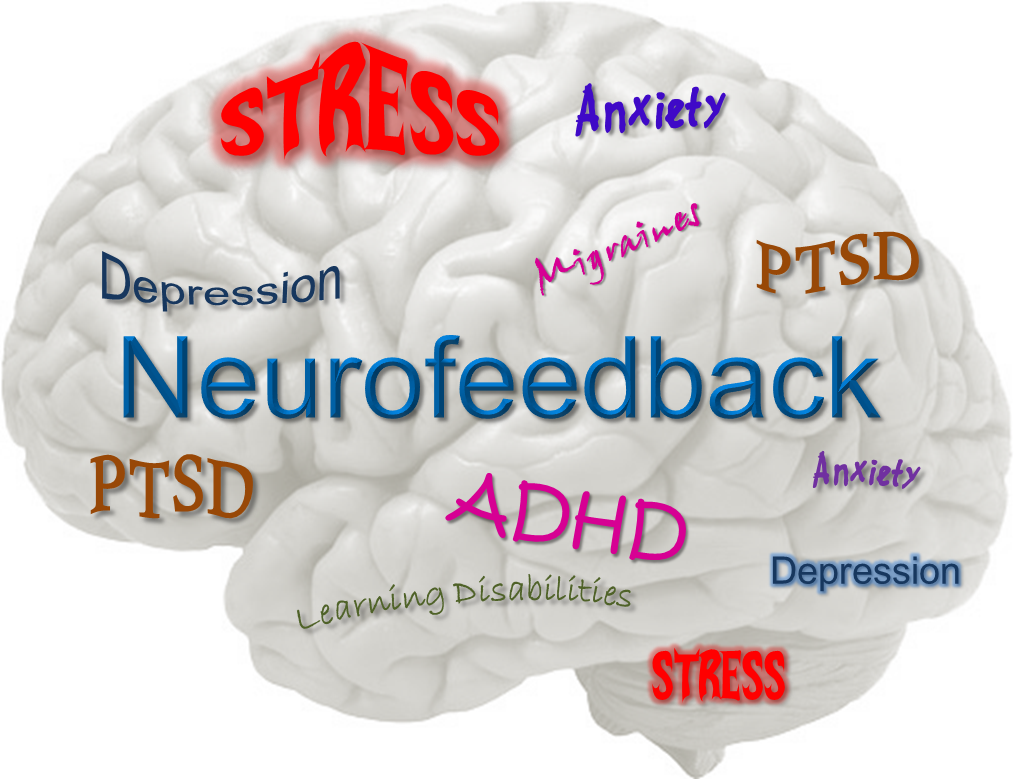
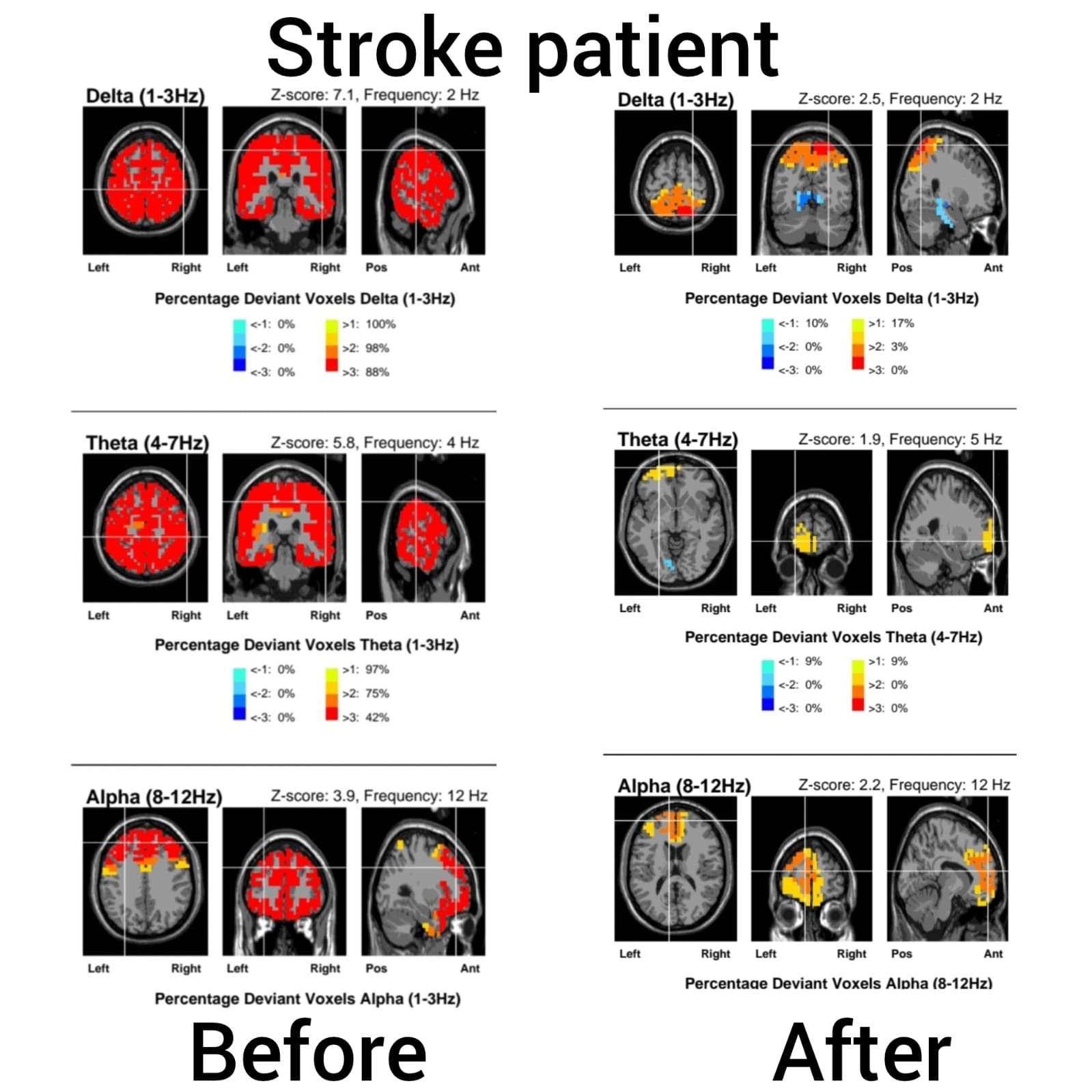
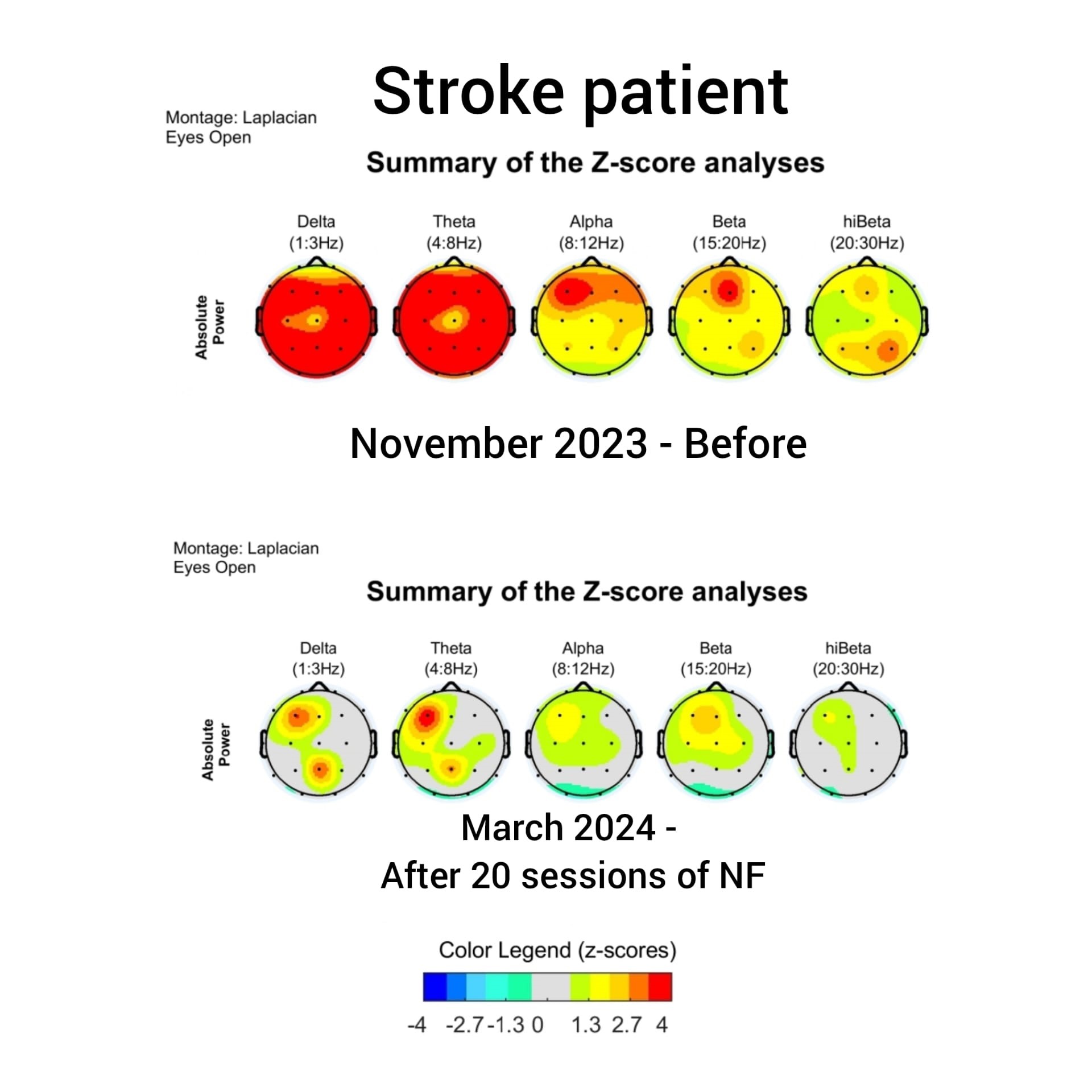
Get Started Today
Healing starts in the nervous system. If you’re ready to calm your body, quiet your mind, and deepen your therapeutic work, Vagus Nerve Stimulation could be a meaningful part of your path.
